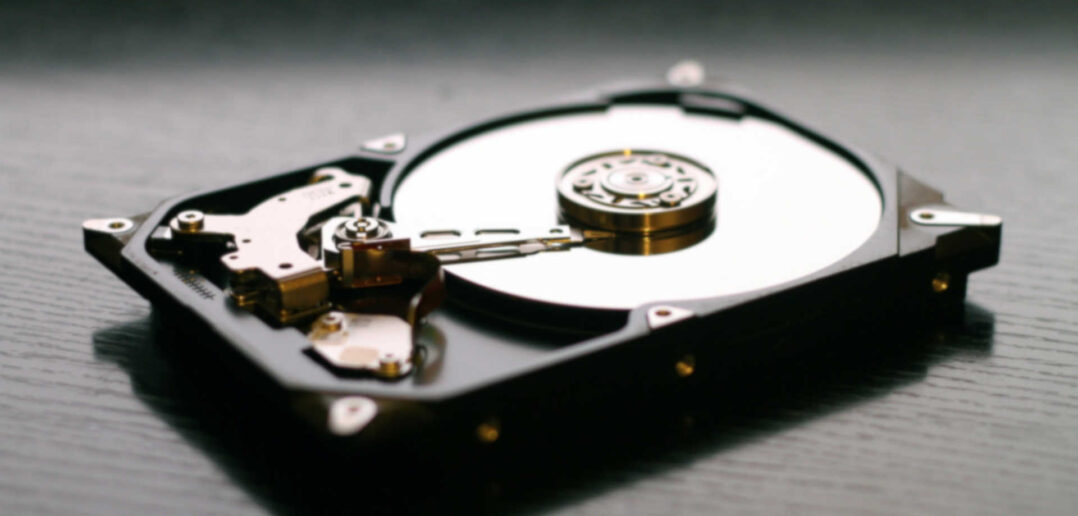Once upon a time, computer storage was a relatively straight-forward affair. Everything your computer ever needed was stored on an internal hard drive, and you used floppy disks (you know – those things that look kinda like the Save icon) to move data between machines.
Things are still relatively straight-forward today, except floppy disks have been replaced with USB drives. And you now have cloud storage. Oh, and network attached storage is a thing now. You also have traditional hard drives and various forms of solid state drives.
Are you confused yet? All these different options can become very overwhelming very quickly. That’s why I’ve written this article, to try and simplify things for you.
How much storage space should I have?
So we’ll cut straight to the chase on this one: there is no one-size-fits-all answer to this question. It depends on what you are using your computer for.
A general guide is to start with around 1 terabyte of storage. Even if you’re running with the more expensive solid state drives, having a terabyte of hard drive space at your disposal is fairly inexpensive and will give you more than enough space for your operating system, applications and a fairly decent document, photo or game library.
There are a few things that would push your storage requirements up. For instance, if you have a large game library, do any content creation or have a really large collection of family photos then you may need to invest in larger amounts of storage.
In this case, you should be looking at the size of all your applications and data and at least double that to work out how much storage space you should have. This will be enough to store all your current data, and have plenty of room to save more.
Verdict: Trying to come up with a one-size-fits-all solution in pointless. The applications installed on your PC and the size of your document library should dictate the amount of storage you should get.
What type of storage should I get?
There are two fundamental types of hard drive that you can get for your computer. One is a solid state drive, and the other is colloquially referred to as “spinning rust”, which is your traditional hard drive that’s been around for years.
The advantages of solid state drives is that they are very, very fast. This is particularly true if your system allows you to run NVME drives. This makes them the better choice for storing your operating system, applications and games as this means that the programs you use launch very quickly. The disadvantage is that they cost more than traditional hard drives.
The advantages of traditional hard drives is you can get higher capacity drives for cheaper than you would get with solid state drives. This makes them a better choice if you’re looking to store a lot of data cheaply where performance doesn’t matter. They can be a very good choice for storing your data as you can get access to a lot of storage for not a lot of money, and for normal data storage performance doesn’t matter so much.
Verdict: For a desktop computer, there is no shame in buying two drives. Invest in a solid state drive to store your operating system and applications, and invest in a second standard hard drive to store your data. This allows you to get the performance benefits of a solid state drive where it’s needed, and still benefit from the cost advantages of a normal hard drive to store large amounts of data. If you’re on a laptop or other portable machine where this isn’t possible, a solid state drive is usually the best option to have access to the best possible performance for your machine.
What about network attached storage?
Network Attached Storage is becoming a lot more popular over recent years. There are various vendors of NAS units, including Synology and QNAP. In a nutshell, their advantage is that you can store all your documents centrally and share them amongst multiple computers, while their disadvantage is setting them up can be a little involved.
One other advantage is that if you install multiple drives into the unit, they usually support various levels of RAID arrays. This is a subject that would require an article all to itself, but the simple explanation is that the data you store on a RAID array is copied to at least two drives. While this is not as good as backup, it does offer a certain amount of protection to your data should a hard drive fail.
One thing to watch for is the speed of the network interface, which will dictate how fast your data can be accessed. Nearly all NAS units on the market today support at least gigabit networking as a minimum. If the unit only supports 100 megabit, it would be worth moving on.
If you have a network of machines, a NAS unit offers a convenient way to have your important data available across all your machines. For these circumstances, they are a worthwhile investment and often worth the learning curve.
Verdict: If you’re wanting to share data between multiple computers and are willing to invest the time in learning how to set up a NAS unit, these can be a great way to do it. Buying one with support for multiple drives and RAID will allow some protection against a hard drive failure. Note though that RAID is not as a substitute for a backup, so you should still be making regular backups of data you cannot afford to lose.
So what’s this cloud storage thing?
You might be looking at the term cloud storage and are wondering what it means. In a nutshell, cloud storage is a place to store your files via the internet.
There are various providers of cloud storage, for example Google Drive and Microsoft OneDrive. Both of these offer both a limited amount of storage space for free, and the ability to purchase extra storage for a monthly fee. Both offer tools to manage your cloud storage from a variety of devices.
The big advantage of cloud storage is it is a convenient way to store documents somewhere where you can share them with others outside your home or by yourself when you’re away. The big disavantages is accessing these data is dependant on having a working Internet connection, and if someone is able to get into your account they are also able to access your data. If you’re going to make use of this, make sure your account is protected by a strong password and you use the tools available to you to enable two-factor authentication to make it more difficult to get unauthorised access to your data.
Cloud storage is a very good option if you have data that needs to be available at multiple locations, or for backups that need to be stored off-site.
Verdict: If you regularly need access to some of your data when you’re not at home, or you want a convenient way to share data with friends and family (for instance sharing your family photos with Grandma) then cloud storage is a great way to do this. It’s also a great option for those who need a way to have backups stored off-site. Make sure though that your account is well protected from unauthorised access.
Should I be doing backups?
If you have data you can’t afford to lose, then you need to be doing backups. Having only one copy of your important documents is very risky. If anything ever happens to that copy, then you’re in a tricky situation. Even if you store your data on a RAID array, you should still be backing up your data as there are a whole lot of scenarios where RAID offers no protection.
One of the simplest ways of backing up your data is to use an external hard drive, and place a second copy of your critical data on this drive. This should be updated regularly to make sure the backup is of a recent version of your critical documents. Make sure once the backup is complete or updated, the drive is stored somewhere convenient but secure.
The other way to conveniently store backups is to utilise the cloud storage we talked about earlier. This does offer the protection of having a copy of your data off-site, which can be useful in the event of for instance a natural disaster. The same comments about securing your account still apply.
Verdict: If anyone ever tells you you don’t need to backup your important data, they need a high five. To the face. Repeatedly. With a brick. The same can be said for those that think RAID is a substitute for a backup. You should always have a backup of any data you can’t afford to lose. There are plenty of convenient options available now to back up your important data, so there’s really no excuse not to do it.



